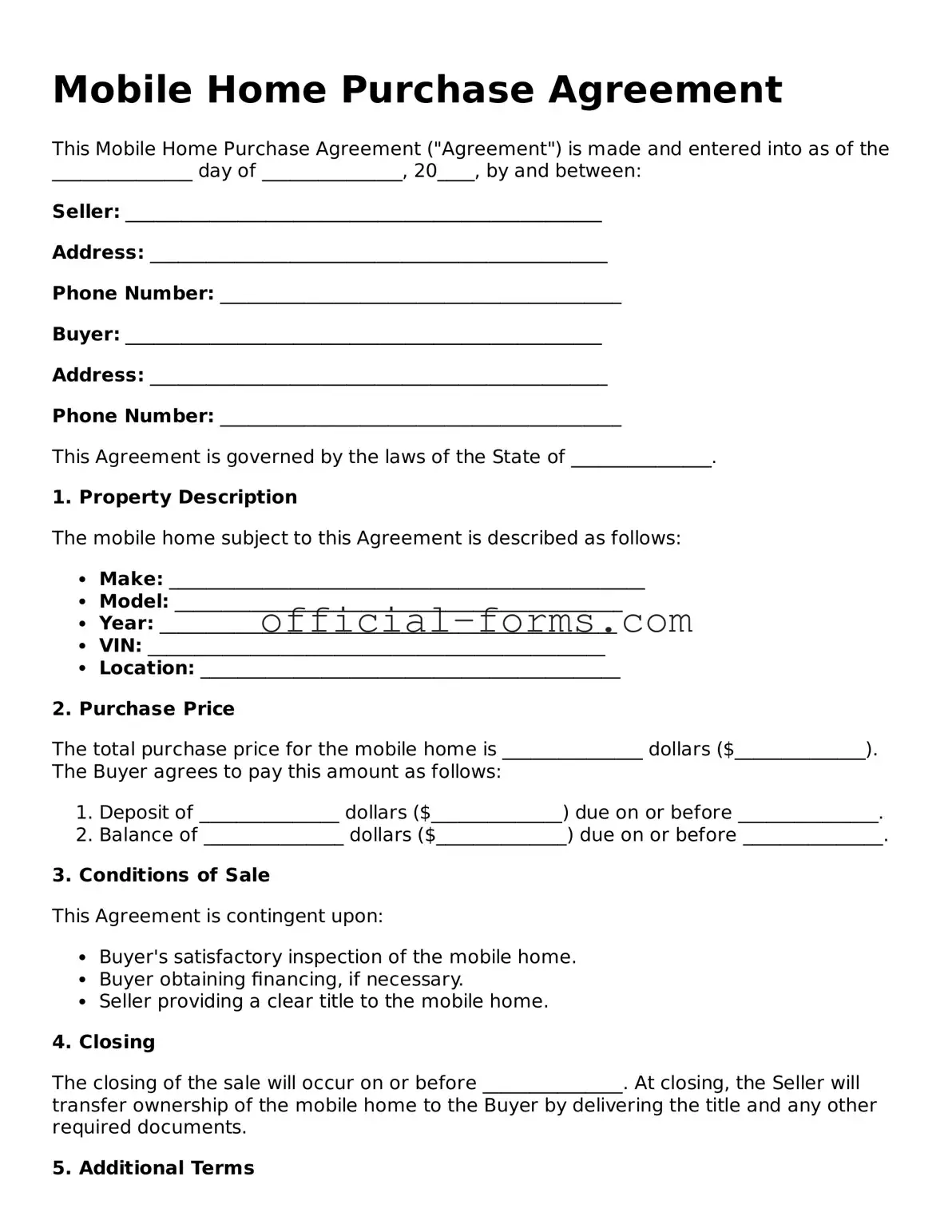Filling out the Mobile Home Purchase Agreement form can be straightforward, but many people make common mistakes that can lead to issues later on. One frequent error is failing to provide accurate personal information. Buyers should ensure that their names, addresses, and contact details are correct. A simple typo can cause confusion and delays.
Another mistake is not including the correct details about the mobile home itself. This includes the make, model, year, and vehicle identification number (VIN). Omitting any of this information can complicate the sale and may even lead to legal issues.
Many individuals forget to specify the purchase price. This is a crucial element of the agreement. Without a clear price, both parties may have different expectations, leading to disputes down the line.
Additionally, people often neglect to read the terms and conditions carefully. This section outlines important details regarding the sale, such as payment methods and timelines. Skipping this step can result in misunderstandings that could have been avoided.
Another common error is not including contingencies. Contingencies protect buyers by allowing them to back out of the deal under certain conditions, such as financing approval or satisfactory inspections. Failing to include these can leave buyers vulnerable.
Buyers sometimes rush to sign without reviewing the entire document. Taking the time to read through the agreement thoroughly can help catch mistakes or unclear terms. Signing prematurely can lead to regret later.
Some individuals also overlook the need for signatures from both parties. An unsigned agreement is not legally binding. Both the buyer and seller must sign to finalize the deal.
Moreover, people may forget to attach necessary documents. These can include proof of identity, financing agreements, or inspection reports. Missing documents can delay the process and create unnecessary complications.
Lastly, failing to keep copies of the signed agreement is a mistake that can cause problems in the future. Both parties should retain a copy for their records. This ensures that everyone has access to the same information if questions arise later.
